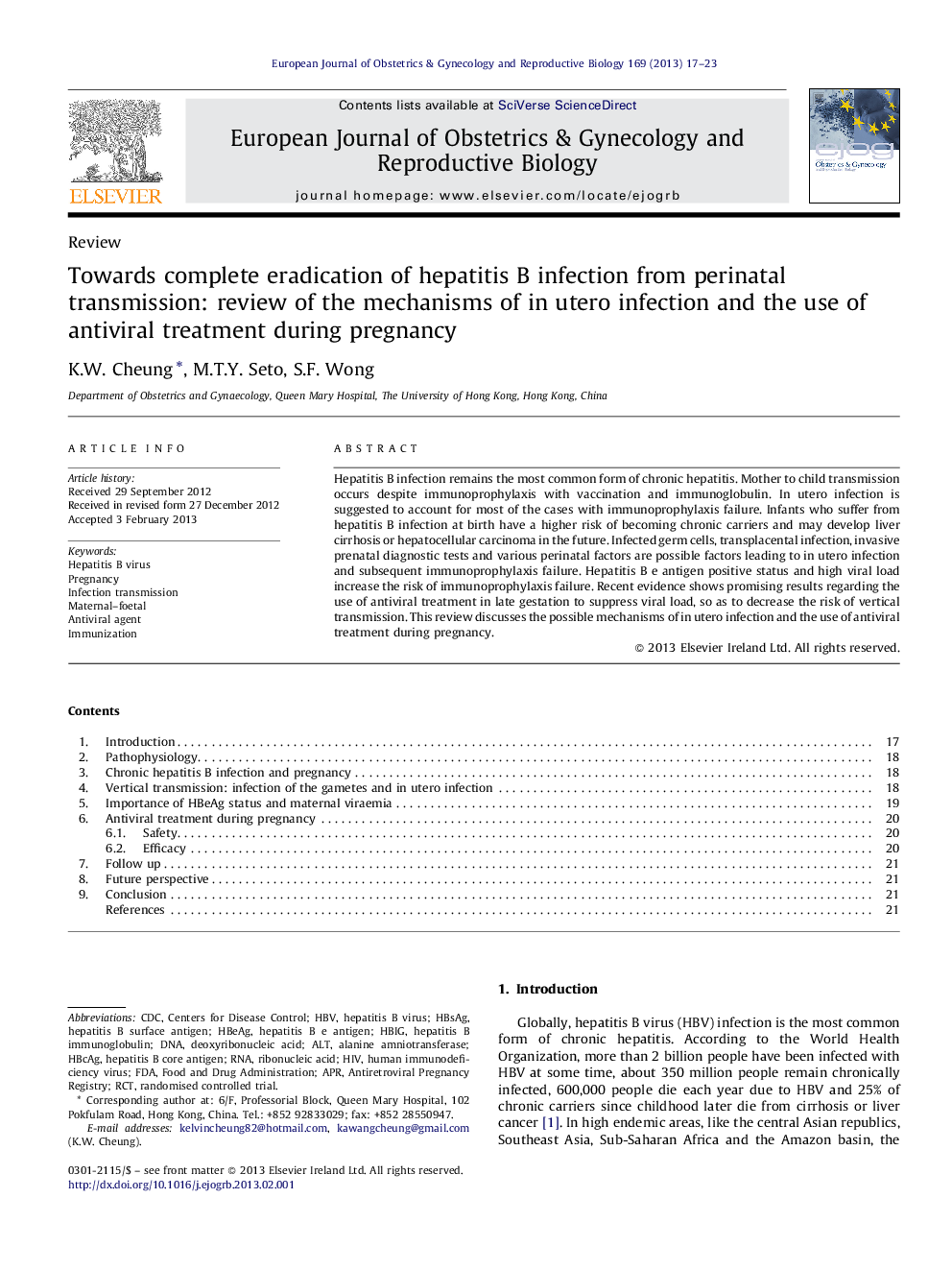| Article ID | Journal | Published Year | Pages | File Type |
|---|---|---|---|---|
| 3920134 | European Journal of Obstetrics & Gynecology and Reproductive Biology | 2013 | 7 Pages |
Hepatitis B infection remains the most common form of chronic hepatitis. Mother to child transmission occurs despite immunoprophylaxis with vaccination and immunoglobulin. In utero infection is suggested to account for most of the cases with immunoprophylaxis failure. Infants who suffer from hepatitis B infection at birth have a higher risk of becoming chronic carriers and may develop liver cirrhosis or hepatocellular carcinoma in the future. Infected germ cells, transplacental infection, invasive prenatal diagnostic tests and various perinatal factors are possible factors leading to in utero infection and subsequent immunoprophylaxis failure. Hepatitis B e antigen positive status and high viral load increase the risk of immunoprophylaxis failure. Recent evidence shows promising results regarding the use of antiviral treatment in late gestation to suppress viral load, so as to decrease the risk of vertical transmission. This review discusses the possible mechanisms of in utero infection and the use of antiviral treatment during pregnancy.
